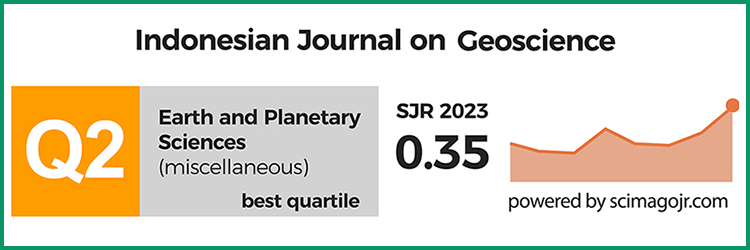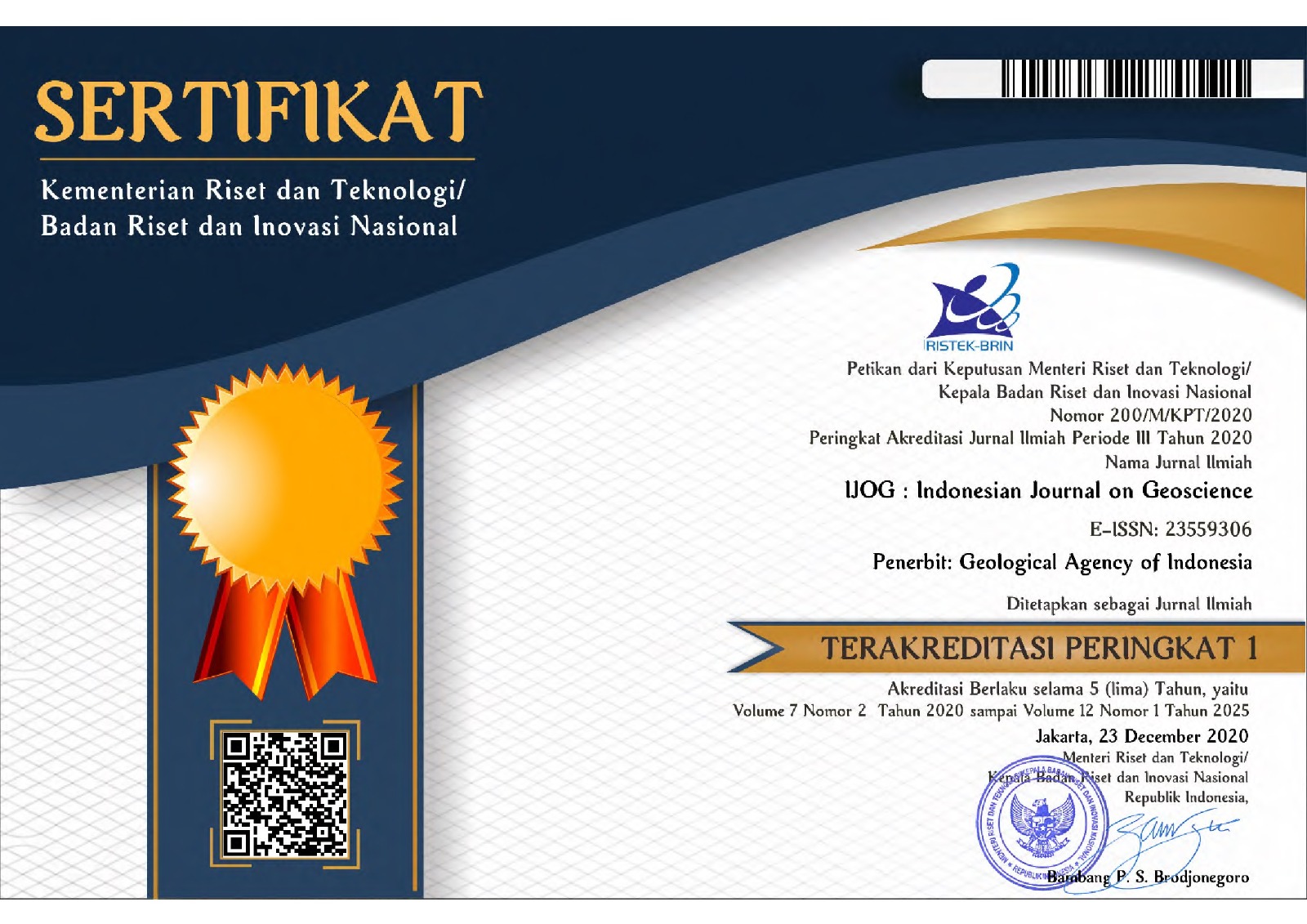Hyperparameter Tuning on Machine Learning-Based Landslide Susceptibility Mapping (Case study: Palu City and Its Surrounding areas)
DOI:
https://doi.org/10.17014/ijog.12.1.43-53Abstract
Landslide susceptibility mapping (LSM) produces a zonation map of landslide susceptibility levels, representing the future probability of landslides. It is necessary to give a guideline regarding spatial planning. A machine learning method was used, namely a random forest (RF) algorithm to map landslide susceptibility in Python. The case study is Palu City and its surrounding areas, which were attacked by a big earthquake on September 28th, 2018. Some earlier LSM studies did not discuss hyperparameter tuning, and several others did not mention the training accuracy. Therefore, this study is to find out whether the fast model without hyperparameter tuning and frequently overfitting, can well produce landslide susceptibility maps. The research questions were addressed by comparing two landslide susceptibility maps built with and without hyperparameter tuning using receiver operating characteristics (ROC) and landslide density (LD) analyses. This study shows that the area under the curve (AUC) of the landslide susceptibility map from the fast RF model without hyperparameter tuning is as high as the AUC from the tuned model map. It also happened in both landslide density (LD) maps, and there is no anomaly in the fast model map. Nevertheless, there are strange appearances in the fast model map. Therefore, hyperparameter tuning to obtain the optimal model with no overfitting is mandatory to predict landslide susceptibility spatially.



















